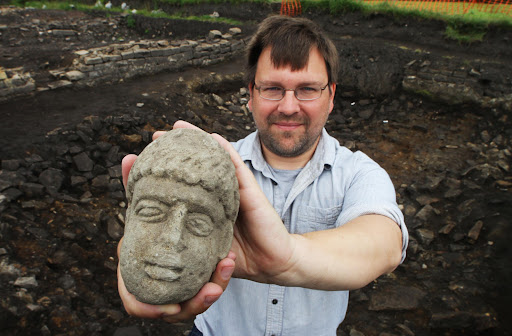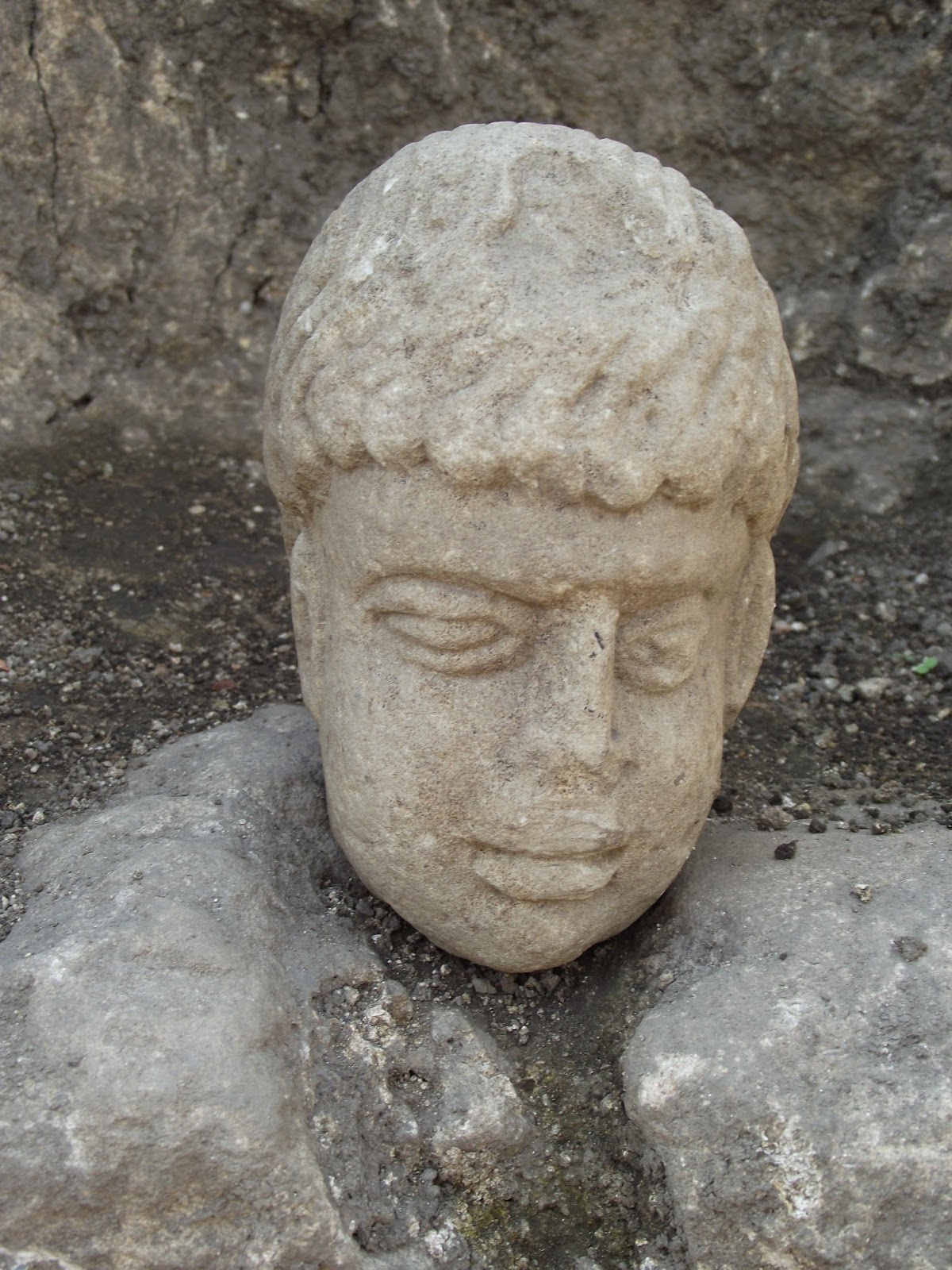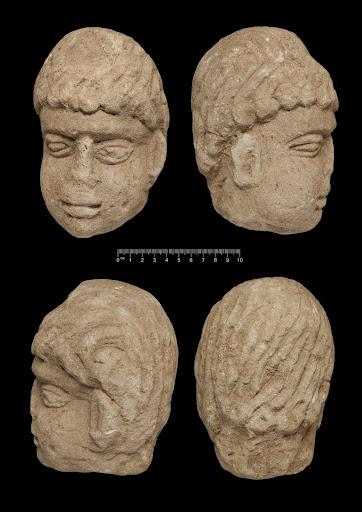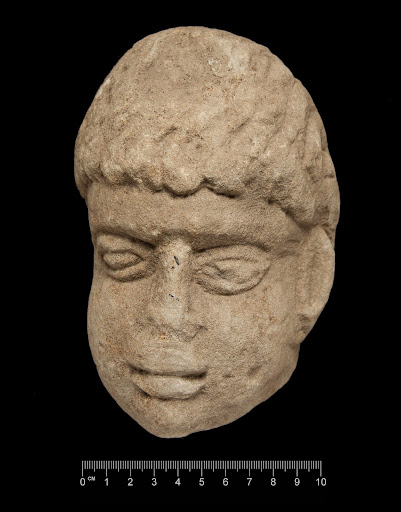In an extraordinary archaeological discovery, a carved stone head believed to be that of a local Roman god has been found at the Binchester Roman fort near Bishop Auckland, County Durham. Unearthed from an ancient rubbish dump, this 1,800-year-old relic provides a fascinating glimpse into the spiritual life of the region during the Roman era. The find, which closely resembles the Celtic deity Antenociticus, was made by a first-year archaeology student and has sparked significant interest among historians and archaeologists alike.
Discovery at Binchester Roman Fort

The stone head, measuring approximately 20 cm and carved from sandstone, dates back to the second or third century AD. It was discovered as part of an excavation at the Binchester Roman fort, a site of great historical importance in northern England. The student who made the discovery was working with a team that was digging through the remains of an old bathhouse at the fort when they came across the ancient artifact. The head was buried in what was once a rubbish dump, possibly discarded after the bathhouse fell out of use in the fourth century AD.
Similarities to the Celtic Deity Antenociticus

The stone head bears a striking resemblance to Antenociticus, a Celtic deity known to have been worshipped in the region as a source of inspiration in war. A similar head, identified as Antenociticus through an inscription, was found in 1862 at Benwell, Newcastle upon Tyne. This connection has led experts to believe that the Binchester head could represent the same god, although definitive identification remains elusive.
The Significance of the Find

Dr. David Petts, an archaeology lecturer at Durham University, commented on the significance of the discovery. He noted that the head was found close to a small Roman altar discovered two years earlier, suggesting that it may have been associated with a shrine within the bathhouse. The presence of such a shrine indicates the importance of the deity to the local Roman population.
Antenociticus is a deity unique to the northern frontier of the Roman Empire, not mentioned in any other Romano-British sites or European inscriptions. This regional specificity has led scholars to consider Antenociticus as a local god, possibly a “Geordie” deity, worshipped by the inhabitants of the area during Roman times.
The Discovery’s Impact on Archaeology

For Alex Kirton, the 19-year-old archaeology student who found the head, the discovery was a career-defining moment. Kirton expressed his excitement, describing the find as one of the most thrilling experiences an archaeology student could hope for. The discovery is part of a broader five-year project at Binchester Roman fort, which aims to uncover new insights into the late Roman Empire.
The project is a collaborative effort involving Durham University’s archaeology department, Stanford University’s archaeology center, the Architectural and Archaeological Society of Durham and Northumberland, and Durham County Council. Together, these institutions are working to shed light on the twilight years of Roman rule in Britain.
Conclusion
The discovery of the 1,800-year-old stone head at Binchester Roman fort offers a tantalizing glimpse into the religious practices of the region during the Roman era. While the exact identity of the deity remains uncertain, the head’s resemblance to Antenociticus suggests a local significance that extends beyond the walls of the fort. As archaeologists continue to explore the site, further revelations may yet come to light, deepening our understanding of the spiritual and cultural landscape of ancient Roman Britain.
